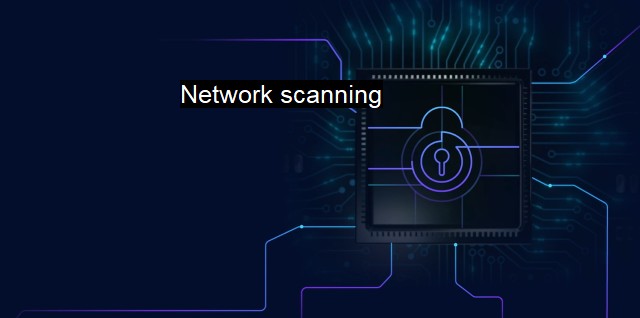What is Network scanning?
Understanding Network Scanning: Techniques for Identifying Network Vulnerabilities and Risks
Network scanning is a critical part of cybersecurity and includes various cybersecurity techniques that are used to identify life hosts or productive apparatuses within a network. network scanning is a procedure utilized for identifying live hosts, ports, and services connected within a shared system. Given the extensive connectivity of the internet, and with more and more devices going online, network scanning becomes increasingly important to identify potential network vulnerabilities.When it comes to cybersecurity, the importance of network scanning cannot be overstated as it is a fundamental step to identify potential vulnerabilities in a system. By assessing the number of systems and their running services within a network, cybersecurity professionals can predict potential security risks and take preventative measures. From a security perspective, network scanning goes hand in hand with antivirus software because via this process, it's easier to figure out which resources are shared openly and which devices have open ports. Network scanning assists in seamless management of impending threats and malware.
Generally, network scanning employs two primary methods, each with its own set of benefits and challenges. Horizontal scanning is one method where, within a subnet, one port is scanned in multiple hosts. This generally looks for one particular vulnerability across the network. Besides, there is vertical scanning, which involves examining multiple ports in one host. This strategy seeks out multiple vulnerabilities within a single system.
The process of network scanning involves sending requests or packages to different nodes of a network or system. The response received from these nodes assists in gauging their status or their functions. Network scanning can take the form of port scanning, which is a popular practice used to expose and patch holes within a system. It targets specific hosts to find open doors into a system. Examination of incoming and outgoing packets also allows users to recognize if such packets carry any potential threats or malware by cross-checking with database of an antivirus software.
Network vulnerability scanners further play an integral part in network scanning. They examine the network for probable weaknesses and produce a vulnerability evaluation report, which cybersecurity specialists can utilize to secure a network environment. network-based intrusion detection systems (NIDS) also scan incoming network traffic to detect harmful activities or violations. They are advantageous because they are capable of inspecting all inbound and outbound network activities, thus assisting in reducing the likelihood of compromise or attack.
For antivirus companies, network scanning processes form a vital cog in the overall service provided. Antivirus software relies upon network scanning to understand and map a user's network traffic, detect any disruptions, and mitigate threats as quickly as possible. This proactive testing, inspection and monitoring help them keep application functionality error-free by identifying errors or divergences from the expected network behavior.
It is essential to recognize that today's networks are complex systems that demand a deep understanding of various components, their operations, and the way they interact. Network scanning is an integral part of managing cyber risk on these expansive systems by identifying active hosts/ports, and the versions of the software they are running along with the vulnerabilities.
Network scanning helps antivirus software to update the vulnerabilities both in a network and endpoints, helping mitigate potential future threats. Antivirus software can indeed work in concert with network scanning protocols by immediately activating a malware-scanning operation when the network scan highlights a potential vulnerability, creating a defense-in-depth scenario for securing digital assets against multilevel cyber-attacks. In sum, network scanning serves as an indispensable tool for enhancing cybersecurity posture right in line with antivirus scenarios, which together ensure the digital wellness of organizations today.

Network scanning FAQs
What is network scanning?
Network scanning is the act of exploring a network to identify connected devices, open ports, and services running on those devices. This is done for cybersecurity and antivirus purposes.What is the purpose of network scanning?
The main purpose of network scanning is to identify potential vulnerabilities in a network. By scanning the network, cybersecurity experts can identify weak points that can be exploited by hackers and take necessary measures to secure those points.How is network scanning conducted?
Network scanning is conducted using specialized software called network scanners. These scanners can look for open ports, services running on those ports, and identify connected devices. Some popular network scanners include Nmap, Angry IP Scanner, and Zenmap.Is network scanning legal?
Network scanning can be legal or illegal depending on the context. If it is done with the owner's consent or for cybersecurity purposes, it is legal. However, if it is done without the owner's consent or for malicious purposes, it is illegal and can result in severe consequences.| | A | | | B | | | C | | | D | | | E | | | F | | | G | | | H | | | I | | | J | | | K | | | L | | | M | |
| | N | | | O | | | P | | | Q | | | R | | | S | | | T | | | U | | | V | | | W | | | X | | | Y | | | Z | |
| | 1 | | | 2 | | | 3 | | | 4 | | | 7 | | | 8 | | |||||||